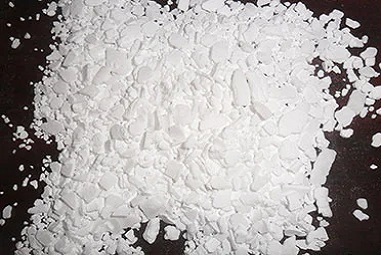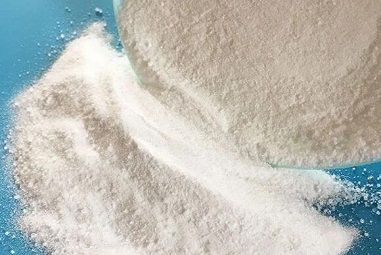Potassium cryolite is deliberately produced using chemical processes, and it can also be a byproduct of manufacturing certain products. The preparation processes of the former mainly include the mixing method and the synthesis method, which can be referred to as conventional processes. The latter type of product is a byproduct of producing Al-Ti-B master alloys. Al-Ti-B master alloys are grain refiners for aluminum alloys and must be added in the production of aluminum materials to refine the alloy's grain and structure, thereby improving the material's performance.
In this method, KF and AlF3 or K3AlF4 and KF or K3AlF6 and AlF3, or K3AlF6 and potassium cryolite are mixed in specified proportions, using various methods to mix and grind them. Some processes also mix these basic ingredients with a small amount of other fluorides to further improve the flux's performance. There are wet mixing methods, dry-wet mixing methods, and melting methods for preparing mixtures of KF and AlF3. For potassium cryolite mixed with KF, it is generally mixed as an anhydrous powder with a ratio of 80% to 99.8%. When potassium cryolite is mixed with AlF3, it is generally 60% to 70% K3AlF6 and 27% to 33% AlF3. This mixture can serve as a basic ingredient, to which a small amount of other fluorides can be added. K3AlF6 is mixed according to the eutectic proportion; for example, 20% K3AlF6 and 80% potassium cryolite.
The main disadvantages of preparing potassium cryolite using the mixing method are: the basic raw materials such as KF, potassium cryolite, or K3AlF6 are expensive and difficult to produce; the prepared products often contain free KF, which is soluble in water and absorbs moisture, causing corrosion of welded parts. Although the melting method does not have these disadvantages, it is cumbersome to operate, energy-intensive, and it requires high-temperature melting and grinding. Therefore, mixed synthesis methods have been developed, using Al(OH)3, HF, KCl, KOH, K2CO3, KBr, and others as raw materials, forming commercial preparation processes like potassium aluminate method, potassium fluoride method, aluminum hydroxide potassium method, potassium carbonate method, and potassium compound method.
Taking the potassium aluminate method as an example to explain the key points and advantages of the synthesis method: Al(OH)3 reacts with hot KOH solution to form a clear KAlO2 solution. The amount of K+ in this solution is sufficient, ensuring the K:Al ratio corresponds exactly to the eutectic point ratio. Then, excess hydrofluoric acid is added to precipitate a mixture of K3AlF6 and potassium cryolite. This mixture is then dried and baked at 200°C to remove residual free acid. The reaction equations are:
Al(OH)3 + KOH = KAlO2 + 2H2O
2KAlO2 + 2KF + 8HF = K3AlF6 + KAlF4 + 4H2O
The prepared K3AlF6 and potassium cryolite mixture is a fine white powder with particle sizes of 0.1 to 5μm and a melting point of 560°C, making this kind of minerals non metallic an excellent flux for aluminum alloy brazing. Compared to the mixing method, it does not require high-temperature melting or grinding, making it simple to operate, high-quality, cost-effective, suitable for large-scale production, and meeting the needs of the automotive industry's aluminum part brazing development.


